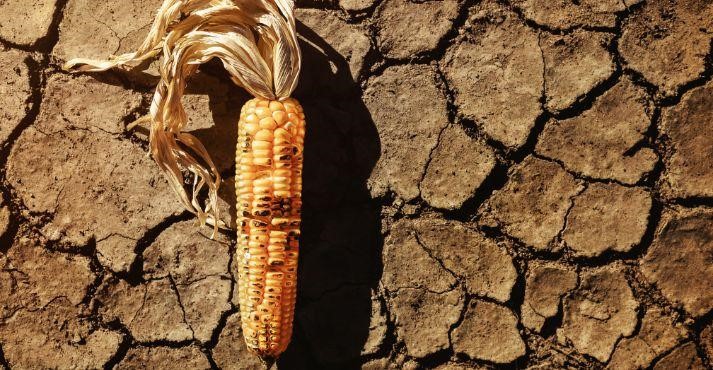Singaporeans enjoy a diverse culinary culture, but did you know that over 90% of their food comes from beyond their shores?
This staggering statistic reveals their heavy reliance on imports to satisfy their daily needs. But what if this complex web of global food supply encounters a hiccup?
The potential risks of food insecurity could be dire, affecting everything from supermarket shelves to dinner tables.
The consequences of a disrupted global food supply could be dire, affecting everything from supermarket shelves to dinner tables.
However, the ‘30 by 30 Singapore’ initiative steps in—a bold plan to transform their food landscape, offering a hopeful solution to these concerns.
By striving to produce 30% of its nutritional needs locally by 2030, the Singaporean Government is not only aiming for self-sufficiency but also safeguarding its food future.
Let’s explore this critical effort in more detail and how it’s reshaping Singapore’s approach to food security.
What is the 30 by 30 Goal?
The ’30 by 30′ goal is Singapore’s ambitious food security plan and mission to grow 30% of their food locally by 2030.
It’s like a giant puzzle piece in the “Singapore Green Plan 2030,” their roadmap for a greener and more sustainable future. Consider it ensuring they have enough food, even if things get tough.
Why Should They Care
Singapore is a tiny island with little space for farming. Plus, they rely a lot on other countries to bring us food. But what if something happens and they can’t get enough food from outside? That could be a problem.
Building Self-Sufficiency
That’s where the ’30 by 30′ goal comes in. Growing more of their food right here in Singapore allows them to be more self-sufficient and less dependent on others. It’s like having a backup plan for their food supply chain, and local food production is one of the answers.
Beyond Food
And the best part? It’s not just about food—it’s also about taking care of their planet and building a more resilient Singapore. By growing food locally, they can reduce their carbon footprint and make their city greener and healthier for everyone.
Why is the 30 by 30 Goal Important?

The’ 30 by 30 ‘ goal is crucial for a few reasons. First, it’s all about ensuring they have enough food to eat, no matter what happens. By growing 30% of their food locally by 2030, they are strengthening their food security mechanism.
That means they will be okay with getting food from other countries if there are any problems getting food from other countries.
But it’s not just about having enough to eat—it’s also about caring for their planet. Growing food locally makes them more responsible with their resources.
It’s like using their land and water more smartly so they can keep growing food for years. That’s what they call sustainable agriculture in Singapore.
And here’s another cool thing: by reaching the ’30 by 30 ‘ target, they are not just helping themselves; they are also helping their economy.
Growing more food locally means they are supporting their local farmers and businesses. Plus, it creates new jobs for people in the agri-food industry. So, it’s a win-win for everyone!
Strategies for Achieving the 30 by 30 Goal

Want to know how they will achieve the’ 30 by 30 Singapore’ goal? Let’s explore the intelligent strategies they are using to grow more of their food right here at home.
By rolling up their sleeves and getting creative, they are making this ambitious goal a reality. So, what’s the game plan? Let’s find out.
1. Embrace Innovation
they are diving headfirst into innovation to tackle food insecurity in Singapore and meet the ‘Singapore 30 by 30’ goal. Here’s how:
- Vertical Farming: They are reaching for the sky—literally! Vertical farming is about growing crops upwards, using less space but producing more food. With tall towers filled with plants, they maximize their land use and grow fresh veggies right in the city’s heart.
- Indoor Fish Farming: No space? No problem! They are bringing indoor fish farming with sustainable closed-loop systems. These high-tech setups recycle water and nutrients, creating a perfect environment for fish to thrive without harming the planet.
- Precision Agriculture: Say hello to the future of farming! Precision agriculture is like farming with a high-tech twist. They use drones, sensors, and intelligent algorithms to collect data and make decisions. It’s all about farming more intelligently, not more complexly, and ensuring every crop gets precisely what it needs to grow.
With these innovative methods in play, they are not just growing food—they are revolutionizing how they feed their nation.
2. Resource Efficiency
Resource efficiency plays a crucial role in their journey towards food sustainability in Singapore and meeting the Singapore Sustainability Plan 2030. Here’s why:
- Water Conservation: Every drop counts! Singapore is getting creative with water conservation in agriculture. Initiatives like rainwater harvesting and water recycling help us make the most of every precious drop. By collecting rainwater and reusing water from other sources, they are ensuring that their crops stay hydrated without straining their water supply.
- Waste Reduction: Let’s cut down on waste! From farm to fork, they are taking steps to minimize food waste and promote upcycling in the food production chain. Whether turning food scraps into compost or finding new ways to use leftover ingredients, they ensure that nothing goes to waste. By reducing waste, they are not just saving resources but also protecting their planet for future generations.
3. Empowering Local Farmers
In line with the 30 by 30 Singapore goal and the food security plan of Singapore, the Singapore Food Agency (SFA) is actively enabling local farmers through targeted grants and training programs:
- Grants and Funding: SFA offers various financial assistance programs to support local farmers. For example, the Agri-Cluster Transformation (ACT) fund provides grants to support farms in upgrading their capabilities, investing in new technologies, and developing essential infrastructure for local food production. The Singapore Food Story 2.0 R&D Programme also allocates funds to innovative research projects to enhance sustainable urban food production.
- Training and Education: SFA conducts training programs and educational initiatives to equip farmers with the necessary skills and knowledge. The courses cover many topics, including sustainable farming practices, technological advancements in agriculture, and food safety standards. By providing practical training and educational resources, SFA ensures that local farmers are well-prepared to implement innovative practices and contribute to the growth of local food production.
Examples of Successful Initiatives

Several real-world initiatives are making significant strides towards the 30 by 30 goal in Singapore:
- Sky Greens: This vertical farming pioneer is revolutionizing urban agriculture by growing vegetables in towering greenhouses. Sky Greens’ innovative vertical farming system maximizes land use efficiency and reduces water consumption, contributing to sustainable local food production.
- Apollo Aquaculture Group: As a leader in local aquaculture, Apollo Aquaculture Group is committed to sustainable fish farming practices. Their state-of-the-art indoor fish farming facilities utilize recirculating aquaculture systems to produce high-quality seafood while minimizing environmental impact.
- Citizen Farm: Citizen Farm is a community-focused urban farm that champions sustainable agriculture and community engagement. Through its innovative farming methods and educational programs, it empowers individuals to grow their own food and contributes to Singapore’s food security goals.
Challenges and Opportunities
In their quest to achieve the 30 by 30 Singapore goal and ensure food security for their nation, they face a series of challenges that require careful steering. At the same time, these challenges present unique opportunities for innovation and growth in the agri-food sector.
Challenges
- Limited Land Availability: Singapore’s compact size poses a significant challenge to expanding local food production. With only a tiny percentage of land available for farming purposes, farmers must find innovative ways to maximize productivity within the limited space.
- High Initial Investment: Implementing innovative technologies, such as vertical farming systems and indoor aquaculture facilities, requires a substantial initial investment. Many farmers may face financial barriers to adopting these technologies, hindering the scalability of local food production efforts.
- Consumer Preferences: Shifting consumer preferences and potential resistance to implementing new farming methods pose another challenge. Convincing consumers to adopt locally-produced food over imported alternatives requires effective marketing strategies and education about the benefits of supporting local food production.
- Climate Vulnerability: Singapore’s tropical climate exposes local food production to risks such as extreme weather events and pest infestations. Farmers must implement flexible farming practices and adapt to changing environmental conditions to ensure consistent yields and food security.
- Supply Chain Disruptions: Singapore’s dependence on imported food exposes it to supply chain disruptions, as seen during global crises like the COVID-19 pandemic. Strengthening local food production reduces dependence on external sources and lessens the risk of supply chain disruptions.
Opportunities
- Creating New Job Opportunities: Despite the challenges, the 30 by 30 Singapore initiative presents a golden opportunity to create new job opportunities in the agri-food sector. From farm workers to agricultural engineers and food scientists, the growing demand for local food production will spur job creation and economic growth.
- Fostering Innovation and Entrepreneurship: The push towards local food production encourages innovation and entrepreneurship in the industry. Entrepreneurs can develop and commercialize new technologies and farming methods tailored to Singapore’s unique urban environment.
- Promoting Public Awareness: The 30 by 30 Singapore initiative provides a platform to promote public awareness about the importance of food security and local production. Educating the public about the benefits of supporting local farmers and consuming locally grown food can encourage a stronger sense of community and strength in their food system.
- Enhancing Food Safety: Local food production allows for greater oversight and control over food safety standards. By reducing reliance on imported food, Singapore can ensure stricter adherence to food safety regulations and minimize the risk of foodborne illnesses.
- Diversifying Food Stheirces: Investing in local food production diversifies Singapore’s food stheirces, reducing vulnerability to external factors such as trade disputes and geopolitical tensions. By expanding the variety of locally grown produce, Singaporeans can enjoy a more robust and sustainable food supply.
Conclusion
In conclusion, the 30 by 30 Singapore initiative represents a bold step towards achieving food security and sustainability in the Singaporean nation.
Despite facing challenges such as limited land availability and high initial investment, the opportunities for innovation, job creation, and public awareness present a promising path forward.
By investing in local farmers, adopting innovative technologies, and encouraging a culture of sustainability, they can build a robust food system that reduces reliance on imports and enhances their self-sufficiency.
Through collective efforts and strategic partnerships, Singapore can lead the way toward a future where local food production meets a significant portion of its nutritional needs.
The 30 by 30 Singapore goal is not just a target; it’s a vision for a more resilient, sustainable, and secure food future for generations to come.












